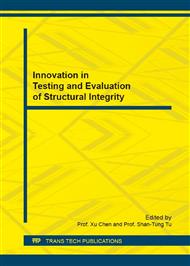p.405
p.410
p.419
p.425
p.431
p.436
p.441
p.449
p.453
Failure Analysis of the outside Coating on the Furnace Roller
Abstract:
A failure case of the outside coating on the furnace roller is presented in this study. The coating consists of WC-Co, which is deposited on 45 steel by High Velocity Oxygen Fuel (HVOF) spraying. The spalling of coatings has been found in the middle of the roller. Rust was also observed on the coatings of the roller. The failure analysis of the coating was performed in terms of composition analysis, and microstructure observation etc. In addition, the effects of different sandblasting post-treatments were compared. And the effect of substrate material is investigated on the corrosion of coatings. It was concluded that the sandblasting particles remained on the substrate surface have effects on the failure of the coating. The peeling-off coating on the roller is also related with the formation of iron oxides. Less sand can be remained on the substrate surface when air purging and brushing is used after the sand-blasting compared with air purging or non-treatment is applied. The stainless steel shows more excellent corrosion resistance than the low carbon steel when they are used as substrate for WC-Co coatings.
Info:
Periodical:
Pages:
431-435
Citation:
Online since:
September 2016
Authors:
Price:
Сopyright:
© 2017 Trans Tech Publications Ltd. All Rights Reserved
Share:
Citation:


